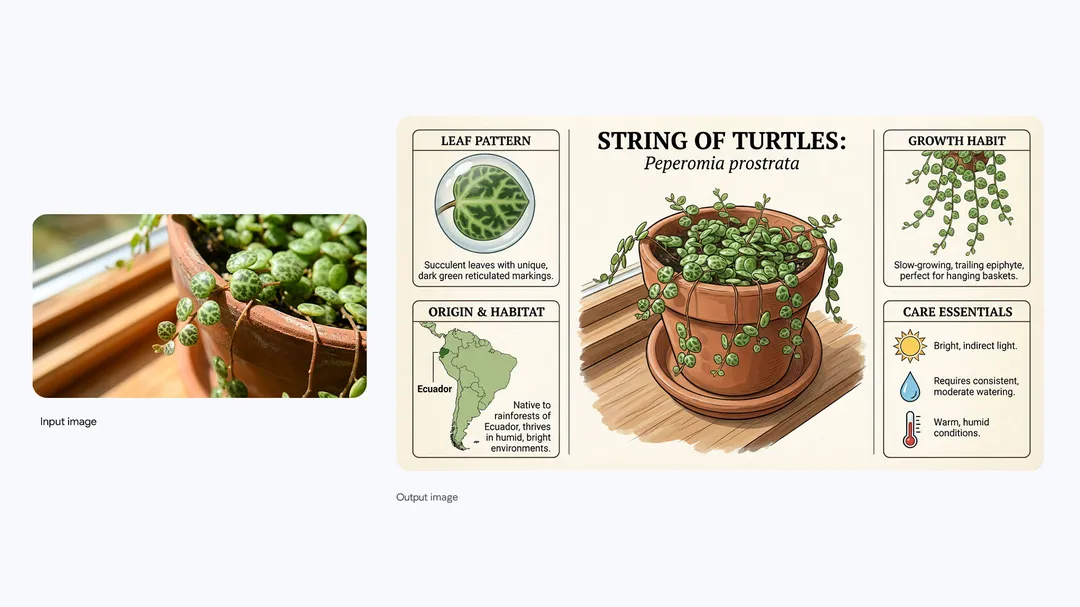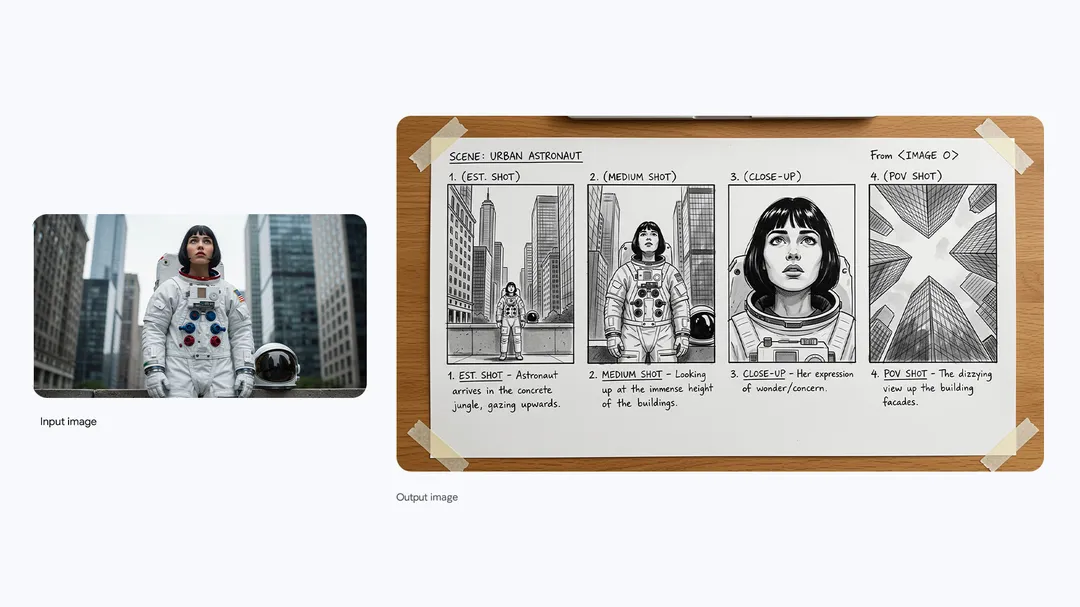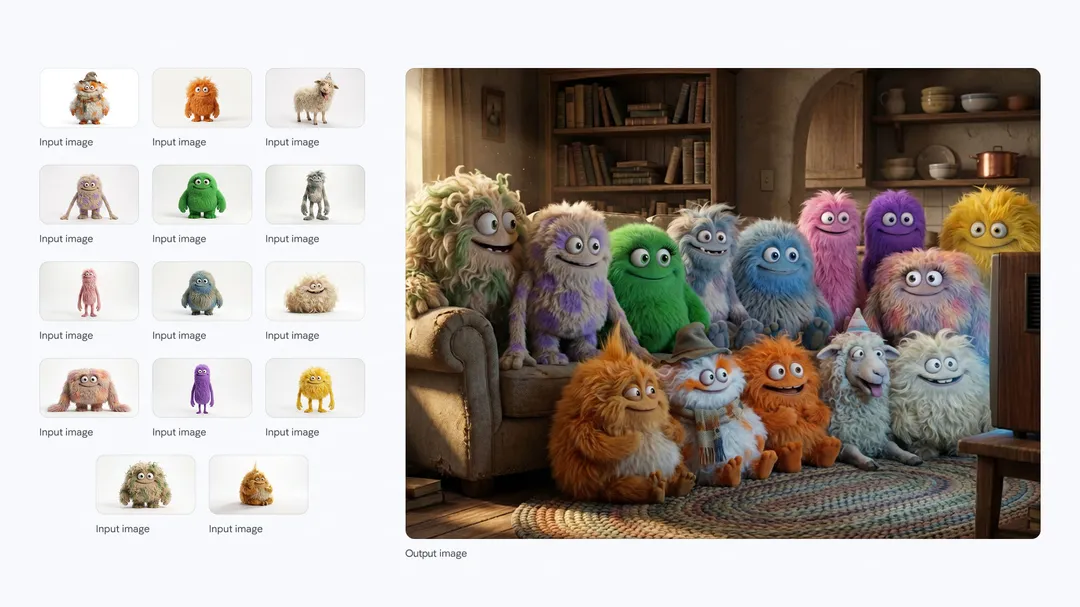Nano Banana Pro: The Complete Guide to Google’s Gemini 3 Pro Image Model
Published: November 21, 2025
Based on insights from: Naina Raisinghani, Product Manager, Google DeepMind
In the rapidly evolving landscape of generative AI, the gap between “fun to use” and “professional grade” is closing fast. On November 20, 2025, Google DeepMind officially bridged this gap with the release of Nano Banana Pro.
While its predecessor, the original Nano Banana (built on Gemini 2.5 Flash), was a hit for casual edits and restoring old photos, the new Pro version represents a paradigm shift. Built on the powerful Gemini 3 Pro infrastructure, this model isn’t just about generating pixels; it’s about reasoning, understanding physics, and integrating real-world knowledge into studio-quality designs.
This comprehensive guide explores everything you need to know about Nano Banana Pro—from its technical capabilities and practical applications to how you can access it today across the Google ecosystem.
What is Nano Banana Pro?
Nano Banana Pro is Google’s state-of-the-art image generation and editing model. It is the direct successor to the Nano Banana model released earlier this year.
The defining characteristic of Nano Banana Pro is its foundation. It is built upon Gemini 3 Pro, Google’s most advanced multimodal model to date. This architectural upgrade allows the image model to leverage “state-of-the-art reasoning” and “real-world knowledge.”
Unlike standard image generators that rely solely on visual patterns, Nano Banana Pro understands context. It allows users to visualize information, prototype designs, and turn abstract notes into concrete diagrams with a level of precision previously unattainable.
Key Differences at a Glance
| Feature | Original Nano Banana | Nano Banana Pro (New) |
|---|---|---|
| Base Model | Gemini 2.5 Flash | Gemini 3 Pro |
| Primary Use Case | Casual creation, fast editing | Professional design, complex composition |
| Reasoning | Standard | Advanced Reasoning & World Knowledge |
| Text Rendering | Basic | High-fidelity, Multilingual, Legible |
| Resolution | Standard | Up to 4K |
Core Capabilities: How Nano Banana Pro Changes the Game
The shift to Gemini 3 Pro unlocks four major capabilities that redefine professional workflows.
1. Visualization Powered by Logic and Real-World Knowledge
One of the most significant pain points in generative AI has been “hallucination”—creating images that look good but make no logical sense. Nano Banana Pro addresses this by integrating Gemini 3’s advanced reasoning.
This model doesn’t just paint; it learns. It can connect to Google Search’s vast knowledge base. This means you can generate visuals based on real-time data or specific facts.
-
Educational Content: Create accurate explainers or diagrams for complex subjects. -
Real-Time Data: Visualize current weather conditions or sports statistics instantly. -
Practical Snapshots: Generate a visual summary for a recipe or a how-to guide.
Case Study: Botanical Infographics
The model can take raw data about a specific subject—like a houseplant—and organize it into a coherent, factual infographic.

Image: An infographic detailing the “String of Turtles” plant, covering origins and care essentials.
The Prompt Used:
“Create an infographic about this plant focusing on interesting information.”
2. Finally, Text That You Can Actually Read
For designers, marketers, and international brands, AI’s inability to render text has been a dealbreaker. Nano Banana Pro claims the title of the best model for creating images with correctly rendered and legible text.
Because Gemini 3 understands “depth and nuance,” it can integrate text naturally into the image. It’s not just overlaying letters; it’s rendering textures, fonts, and calligraphy that fit the scene’s lighting and perspective.
-
Multilingual Reasoning: Generate text in multiple languages seamlessly. -
Localization: Translate and localize creative content for international markets efficiently. -
Versatility: Handle everything from short taglines to long paragraphs within the image.
Case Study: Cinematic Storyboarding
In film production, clarity is key. The model can generate storyboards where the shot descriptions and visual cues are perfectly legible and contextually accurate.

Image: A black and white storyboard sketch showing varying shot types (Establishing, Medium, Close-up, POV).
The Prompt Used:
“Create a storyboard for this scene”
3. Unprecedented Consistency and Control
Professional design requires consistency. You cannot have a character change faces between two different panels of a comic, or a product change shape in a marketing campaign.
Nano Banana Pro introduces breakthrough consistency features:
-
High Input Volume: It can blend up to 14 reference images into a single composition. -
Character Persistence: It maintains the visual consistency (resemblance) of up to 5 distinct people or characters within a scene. -
Concept to Creation: It excels at turning rough sketches into finished products or blueprints into photorealistic 3D structures.
Case Study: Complex Character Composition
The following example demonstrates the model’s ability to handle a prompt describing 14 distinct characters while maintaining specific lighting, texture, and atmospheric details.

Image: A complex composition maintaining the consistency of 14 fluffy characters in a dimly lit room.
The Prompt Used (Excerpt):
“A medium shot of the 14 fluffy characters sitting squeezed together side-by-side… watching a vintage, wooden-boxed television set… The overall atmosphere is warm, cozy, and amused.”
4. Studio-Quality Creative Controls
Nano Banana Pro moves beyond simple prompt generation to provide granular editing tools that mimic photography studio controls.
-
Localized Editing: Select, refine, and transform specific parts of an image without affecting the rest. -
Photographic Adjustments: Change camera angles, adjust focus, and apply sophisticated color grading. -
Lighting Transformation: Alter the time of day (e.g., day to night) or add effects like bokeh. -
High Resolution: Support for 2K and 4K resolution output. -
Aspect Ratio Flexibility: Adapt images for different social platforms (Stories, Feeds, Banners) while keeping the subject locked.
Case Study: Adaptive Aspect Ratios
Marketing assets often need to be resized for different platforms. Nano Banana Pro allows for changing the canvas size while intelligently extending the background or preserving the subject.

Image: Adapting an image to a 1:1 aspect ratio by reducing the background while keeping the character locked.
The Prompt Used:
“change aspect ratio to 1:1 by reducing background. The character, remains exactly locked in its current position”
Ecosystem Availability: Where to Use Nano Banana Pro
Google is rolling out Nano Banana Pro across its entire suite of products, tailoring the access based on the user type (Consumer, Professional, or Developer).
For Consumers and Students
-
Gemini App: Available globally. To access, select “Create images” using the ‘Thinking’ model. -
Note: Free-tier users get limited quotas. Once depleted, the system reverts to the standard Nano Banana model. -
Upgrades: Google AI Plus, Pro, and Ultra subscribers receive higher quotas.
-
-
NotebookLM: Available to subscribers globally for visualizing notes and data. -
Google Search: Available via “AI Mode” in the U.S. for Google AI Pro and Ultra subscribers.
For Professionals and Marketers
-
Google Ads: The image generation tools within Google Ads are being upgraded to Nano Banana Pro, allowing advertisers to generate high-fidelity creative assets. -
Google Workspace: Rolling out to Google Slides and Vids, enabling users to create custom visuals for presentations and video content.
For Developers and Enterprise
-
Google Cloud Vertex AI: Enterprises can start building scaled applications using Nano Banana Pro today. -
Gemini API & Google AI Studio: Rolling out now for developers integrating image generation into their apps. -
Google Antigravity: A tool for UX designers to create rich layouts and mockups using the model. -
Gemini Enterprise: Coming soon.
For Filmmakers
-
Flow: Google’s AI filmmaking tool. Available to Google AI Ultra subscribers, offering precise control over frames and scenes for storyboarding and production.
Trust, Safety, and Transparency
As AI-generated imagery becomes indistinguishable from reality, transparency is critical. Google has implemented a dual-layer identification system for Nano Banana Pro.
1. SynthID (The Invisible Layer)
Every piece of media generated by Nano Banana Pro is embedded with SynthID. This is an imperceptible digital watermark that stays with the content even if it is cropped or compressed.
New Verification Tool:
Google has released a verification feature within the Gemini App. Users can upload an image and ask, “Was this generated by Google AI?” The app checks for the SynthID watermark and provides verification. Support for audio and video is coming soon.
(Downloadable asset: A video demonstrating the SynthID verification process is available in the original press release.)
2. Visual Watermarking (The Visible Layer)
To prevent confusion, Google applies a visible policy based on the user tier:
-
Free & Google AI Pro Users: Images will contain a visible Gemini Sparkle watermark. This ensures that casual shares on social media are easily identifiable as AI-generated. -
Google AI Ultra & Developer Users: Recognizing the need for “clean” assets for professional use (e.g., ads, films), the visible watermark is removed. However, the invisible SynthID remains embedded.
Frequently Asked Questions (FAQ)
What is the main difference between Nano Banana and Nano Banana Pro?
Nano Banana (Gemini 2.5 Flash) is designed for speed and casual editing. Nano Banana Pro (Gemini 3 Pro) is designed for complex reasoning, high-fidelity rendering, accurate text generation, and professional workflows requiring consistency across multiple inputs.
Can Nano Banana Pro really generate readable text?
Yes. Unlike older models that produce “gibberish,” Nano Banana Pro uses Gemini 3’s multimodal reasoning to render legible, correctly spelled text in multiple languages. It can handle diverse fonts, textures, and even calligraphy.
Is Nano Banana Pro free?
There is a free tier available within the Gemini App (via the ‘Thinking’ model), but it has a limited quota. Once the quota is reached, users are switched back to the standard Nano Banana model. Unlimited or higher-quota access requires a Google AI Plus, Pro, or Ultra subscription.
How does the model handle copyright or deepfakes?
Google employs SynthID watermarking on all images. Additionally, the model has safety filters. For professional tiers (Ultra/Dev), visible watermarks are removed, but the invisible SynthID remains to ensure provenance can always be traced.
Can I use my own images as reference?
Yes. Nano Banana Pro supports up to 14 input images. It allows you to blend elements from these images while maintaining character consistency (up to 5 people) and stylistic coherence.
Which Google Workspace apps will get this feature?
It is currently rolling out to Google Slides and Google Vids, helping users generate presentation visuals and video assets directly within their workflow.
Conclusion
Nano Banana Pro marks a significant maturity point for AI image generation. By moving beyond simple text-to-image conversion and incorporating deep reasoning, real-world knowledge, and precise control, Google has created a tool that is ready for professional deployment. Whether you are a student visualizing a biology concept or a creative director building a global ad campaign, Nano Banana Pro offers the fidelity and logic required to bring complex visions to life.
Try Nano Banana Pro today in the Gemini App, or explore it through Google AI Studio for development.

